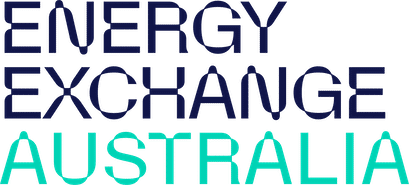How rising onshore build costs are driving FLNG development in Australia
John Wood, Global Industry Director Oil and Gas at Aurecon, explores the impact of global trends on FLNG developments in Australia.
The drop in January to USD 46 per barrel, from a high of USD 115 in the summer of 2014, signals the industry is in for a rough ride over the coming months. Whilst fluctuations of this nature are normal, the last drop of this magnitude was back in 1986, some nineteen years ago. The days of USD 147 in July 2008 are nothing but a memory. Though there is no direct correlation between gas and oil prices they tend to follow the same trends on the global markets.
This is yet another issue to navigate through in what is becoming a complex equation in the Australian market. Despite the supply gap the escalating onshore build costs, competition from cheaper African and Canadian projects, and the booming US shale market are driving the advancement of floating liquefied natural gas (FLNG).
The export market for LNG has become a lot more competitive over the last five years.
Global capacity will increase to 366 million tonnes per annum in 2017 – from 280 million tonnes per annum, with a further 100 million tonnes per annum in construction.
Over the past few years, Australia has received over two thirds of the global investment in liquefied natural gas (LNG) development – that includes FLNG and traditional land base developments. We have seen the shelving of some high profile projects in recent months and collaboration between operators to utilise existing facilities rather than build additional processing capacity. The willingness of operators to invest further in the Australian gas market will depend heavily on the effects the additional supply from the US and Canadian shale markets will have on long term rates.
Looking at importing countries, which play a significant part in the global export market, four or five years ago there were fourteen. Today there are 30 to 31, demand is set to hit 420 million tonnes per annum by 2025
There is potential out of the US for 240 million tonnes per annum, from a possible 34 projects. The US Department of Energy (DOE) has already granted export licence approval to six projects as of late 2013. These approvals represent a move towards the US becoming a major player in the international LNG market.
However, it is possibly the completion of the Panama Canal expansion at the back end of 2016/2017 that will pose the biggest threat to the Australian export market. Turning to Africa, it is reasonable to expect that Uganda, Mozambique, Kenya, and Tanzania will all have an effect on the market. Whilst projects are live in these countries and are not due to come on line for several years it is unlikely the current crisis in oil price will have an effect.
The slowdown in onshore projects has come down to one simple thing, development costs in Australia are anywhere from 20 to 30 per cent more expensive than the offshore options. If we compare the wages of welders in different global locations it becomes clear. A welder working on the Shell Prelude FLNG Project, at its place of construction – a ship yard in South Korea – earns around AUD 74 000 a year, a welder on a project in Northern Western Australia, around AUD 250 000 a year. It’s not hard to figure out how the 20 to 30 per cent cost increase occurs. As a result, we are seeing the onshore market in Australia shifting from major project construction to asset management, and support and service as capacity comes on line, accompanied by a move towards offshore FLNG.
Viewing projects presently under construction globally, in parallel with the demand for LNG, there is still 150 million tonnes per annum supply demand gap between all the projects. Current projections indicate global markets will hit a shortfall between 2020 and 2025. Australia is the here and now, followed by the US, Canada and the African projects. As technology continues to be developed and supply runs low substantial development in the Artic will eventually arrive.
The capital expenditure of the active projects is around 190 billion dollars. Adding in projects on the back burner, and those under consideration, there is another 300 billion dollars’ worth of projects in various planning stages through the project life cycle. But a high-cost environment and currency fluctuations are contributing to these back burner projects being at least 25 per cent more expensive when compared with projects in East Africa.
Stacking the rising onshore build costs in Australia, the competition from African and Canadian projects, and the booming US shale market, against the need to drive shareholder returns, it seems reasonable to suggest that FLNG is the way forward. If that is the case, the question is how can Australia capitalise on the benefits?
-
Stay up to date with the latest news, industry insights and AOG Energy updates.
- Subscribe


